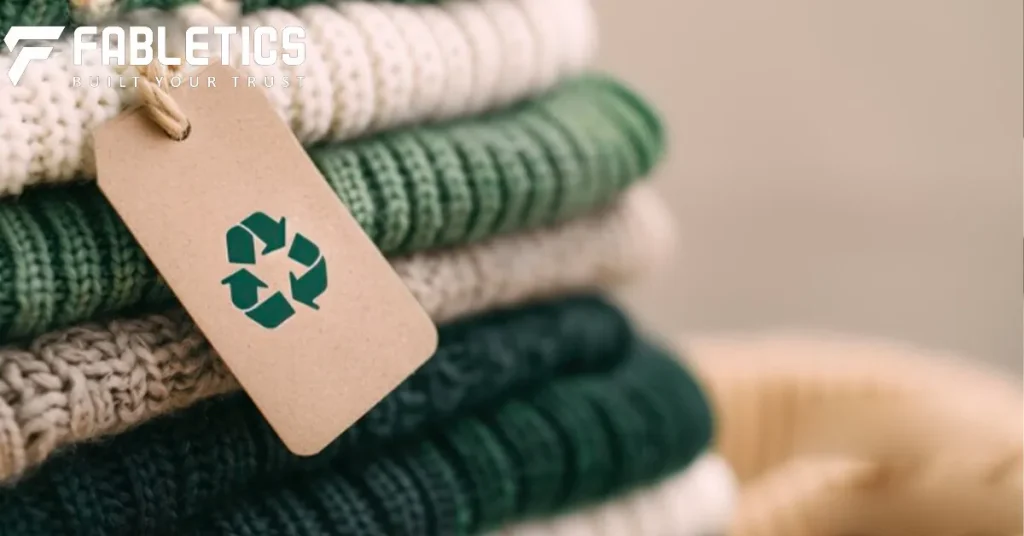Fabric is the most popular material in our lives, which is used to make clothes, furniture, and many other products. It can be made from natural fibers like cotton or wool and synthetic fibers like polyester or nylon. But making fabric uses a lot of water, energy, and chemicals, and creates a lot of waste. That’s why recycled fabric is important. It’s made by reusing old clothes, fabric scraps, or plastic bottles to create new fabric. This helps reduce waste and is better for the planet.
As a fabric manufacturer we will explain the recycled fabric.
What is recycled fabric?
The material that is made by reusing old or waste items instead of making new fabric from scratch is called recycled fabric. It also came from used clothes. Leftover fabric from factories or even used bottles. These items are broken down, turned into fiber again, and made into new fabric.

Production process of recycled fabric
The production of recycled fabric follows a few steps:
Collection:
Collect the old clothes, scrap fabric, and unused bottles and send them to the recycling centers or factories.
Sorting:
The material is sorted by type and color. It helps to avoid the need for dying later, which saves water and chemicals.
Cleaning:
The material is washed with chemicals and water to remove dirt, labels, or anything that can affect the quality of the fabric.
Shredding and melting:
Shredded the natural fabric like cotton and wool, into the fabrics.
The plastic material, like bottles, is melted and turned into threads.
Spinning:
The fabric and threads are spun into the yarn. Just like common fabric production.
Weaving or knitting:
The yarn is then woven or knitted into the fabric, which is ready to use.
Why Recycled Fabric Matters in Today’s Fashion Industry?
The demand for new clothing keeps growing in modern fashion. But the natural resources are limited. At the same time, the waste of fabric is increasing. By using recycled material, that is the way to make fashion more eco-friendly. This helps reduce waste and saves resources.
There are four common types of recycled fabric
There are four common types of recycled fabric
Recycled cotton:
The process of reusing cotton fabric is called recycled cotton. This process helps to reduce textile waste and lowers the environmental impact in fashion.There are two types of recycled cotton:
- Pre-consumer: waste cotton fabric from factories.
- Post-consumer: used cotton clothes and other products.

However, the fibers can be weaker and shorter, often mixed with other materials to make stronger fabric.
Recycled nylon:
Recycled nylon is made byy using waste materials like old fishing nets, fiber scraps, and industrial plastic. These materials are cleaned, melted down, and converted into nylon fibers. The type of recycled nylon, which is made from ocean and landfill waste, is called ECONYL.
Recycled helps to reduce pollution and save energy compared to making new nylon with raw oil.
Recycled polyester:
Polyester fabric is the most usable fabric in the textile industry. Recycled polyester is made from waste material like PET bottles, old polyester clothes. Mostly, half of the clothing in the world is made of polyester. By recycling these materials, we reduce the need of new oil extraction, which is a non-renewable resource. This process is also require fewer steps and use less energy.
Recycled wool:
Recycled wool fabric is made by reusing old wool garments, fabric scraps, and leftover materials from production. The material is collected, sorted by colors, and shredded into fiber to create a new yarn without the need to dye again. This process saves water and chemicals and gives wool a second life while saving natural resources like water, land, and energy.

Environmental impact of recycled fabric
Recycled fabric has a much lower impact on the environment compared to making new fabric from raw material.
It helps to reduce the need for water, energy and harmfull chemicals which are used in production of new fabric.
By reusing old fabric, plastic bottles, or factory waste, recycled fabric keeps tons of material out of landfills and oceans.
It also cuts down greenhouse gas emissions by avoiding the need to create new fibers from scratch, especially when replacing oil-based fabrics like polyester or nylon.
Overall, the recycled fabric is more sustainable fashion industry by saving resource and reduce pollution at every stage of the process.
Pros and cons of recycled fabric
Pros of recycled fabric:
- Eco-friendly: use waste materials and reduce pollution
- Save water and energy: need fewer resources than making new fabric
- Less landfill waste: produces fewer greenhouse gases
- Support circular fashion: promotes reusing and recycling in industry.
Cons of recycling fabric
- Lower fiber strength: Some recycled fibers (like cotton)can be weaker.
- Blended materials are harder to recycle: mixed fabrics are not easy to separate.
- More expensive: the recycling process can cost more than making new fabric.
- Limited availability: not all types of fabric are recycled yet.
FAQs about recycled fabric
Q.1. Why is recycled fabric better for the environment?
It helps reduce waste, saves water and energy, and lowers pollution. It also cuts down the need for new raw materials like cotton or oil.
Q.2. Is the recycled fabric of good quality?
Yes, in most cases. Some types, like recycled polyester and nylon, keep their strength well. Others, like cotton, may be mixed with new fibers for better quality.
Q.3. What can recycled fabric be used for?
It’s used to make clothes, bags, sportswear, home textiles, and more, just like regular fabric.
Q.4. Can recycled fabric be recycled again?
Yes, many recycled fabrics can be recycled again, especially if they are not blended with other materials.
Q.5. Is recycled fabric more expensive?
Sometimes, yes. The recycling process can cost more, but the long-term benefits for the planet make it worth it.
Q.6. Are big brands using recycled fabric?
Yes! Many popular fashion brands now use recycled fabric as part of their move toward sustainable fashion.



